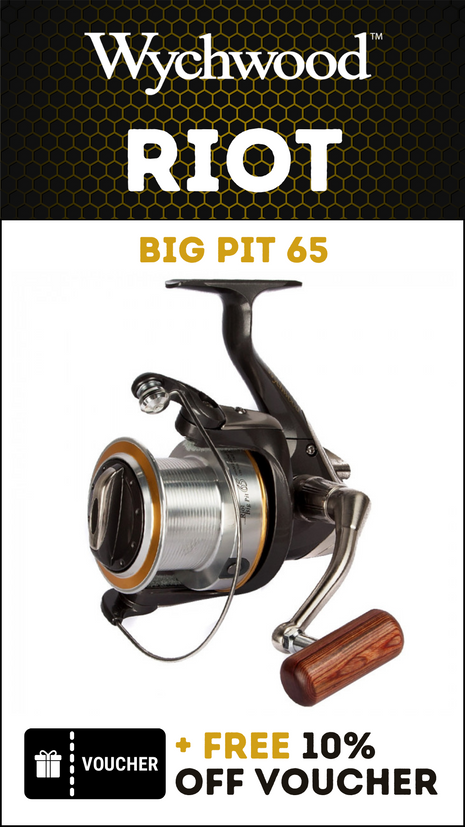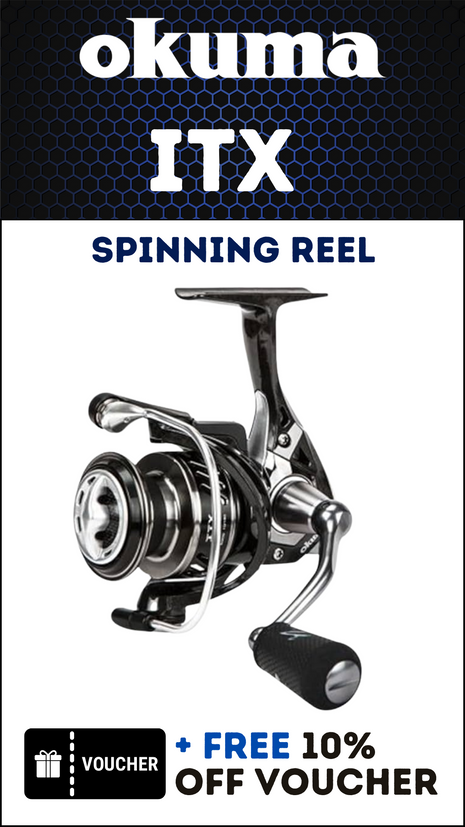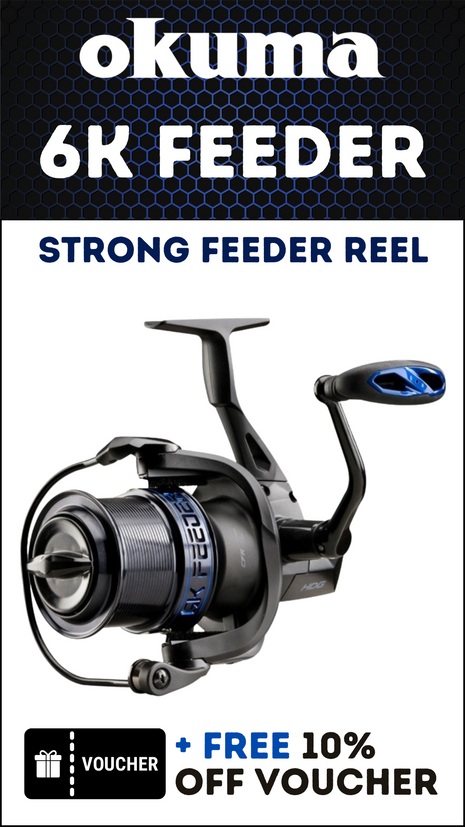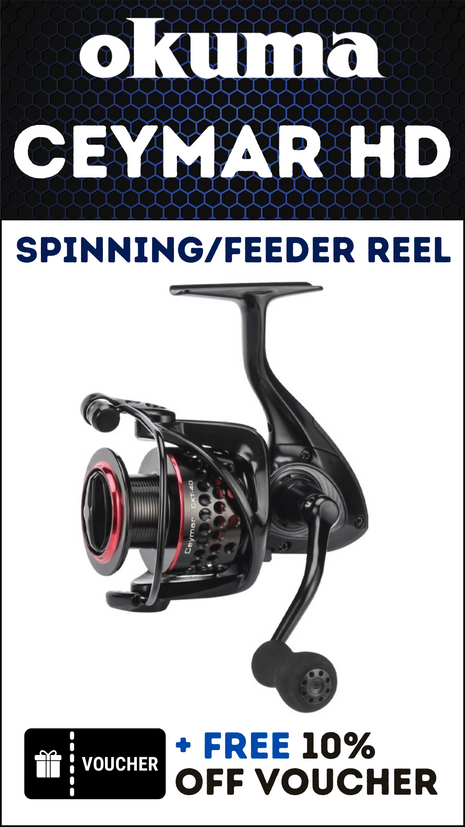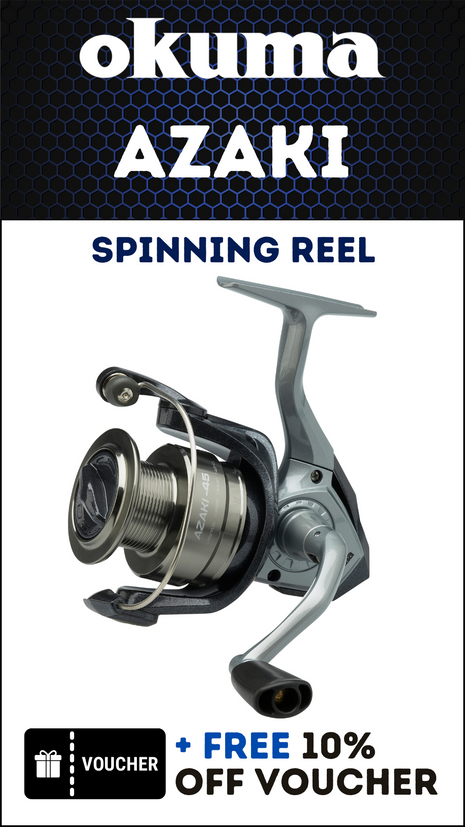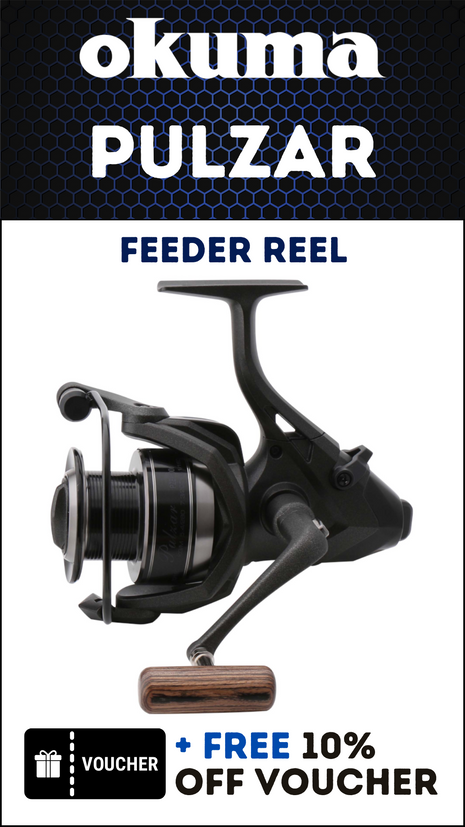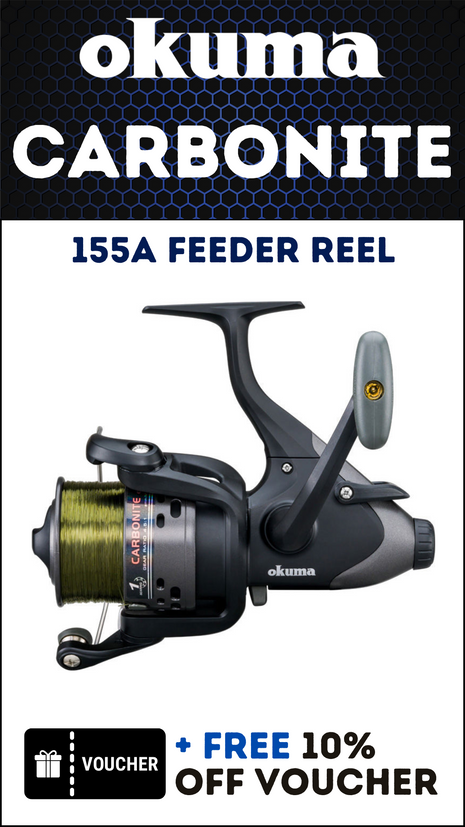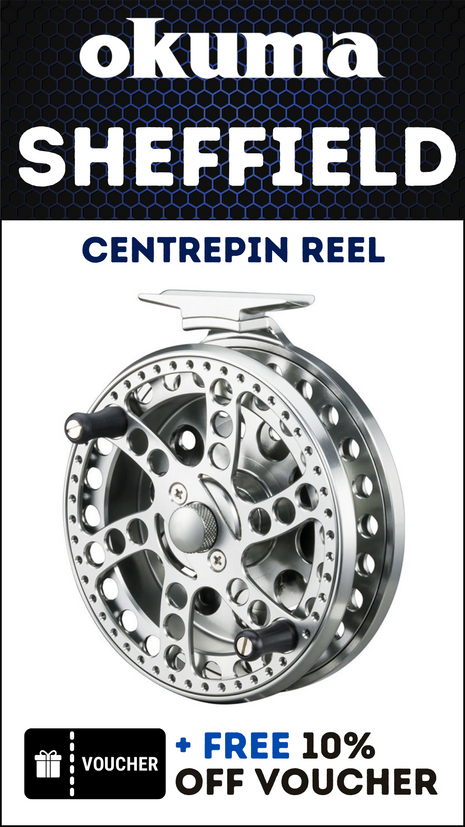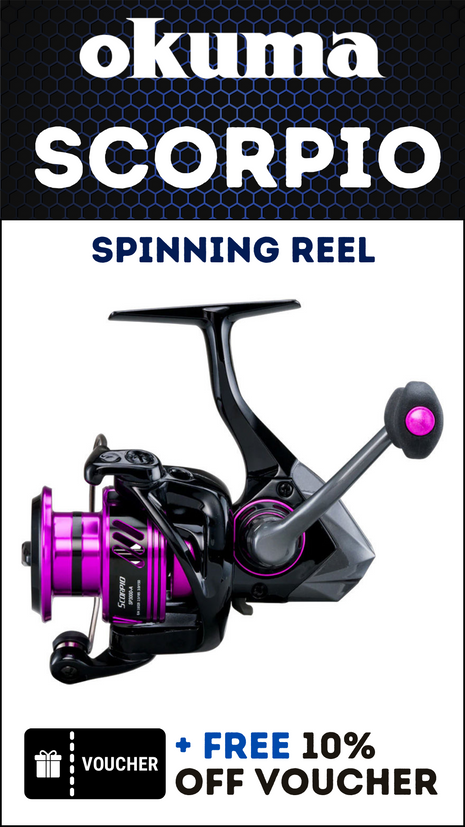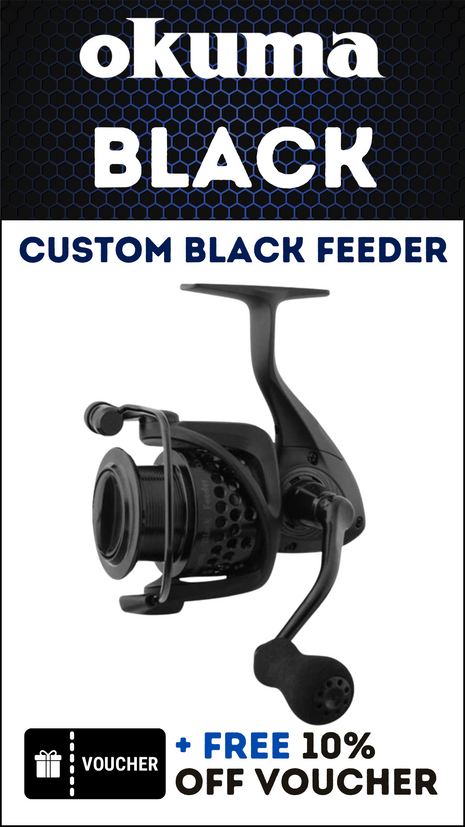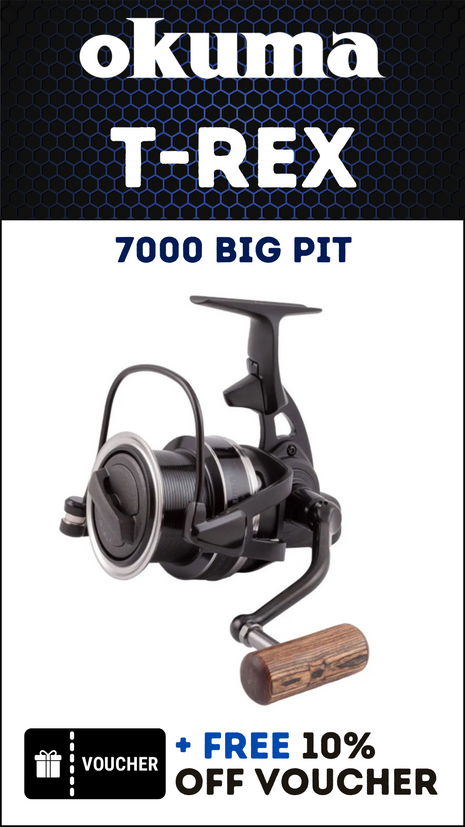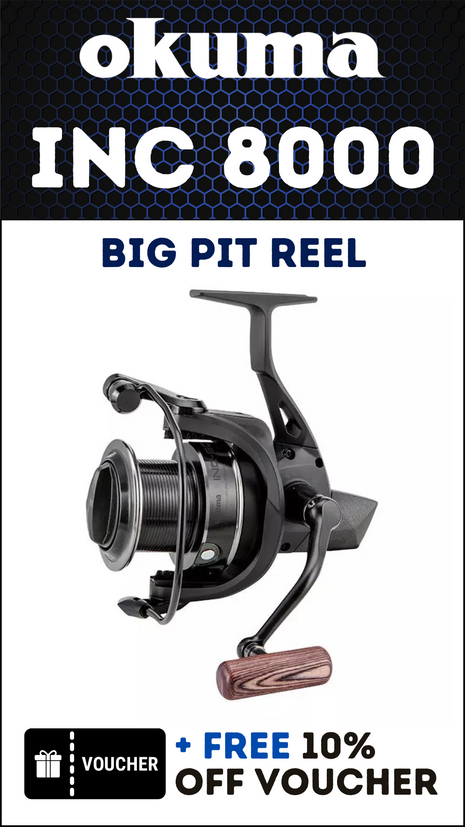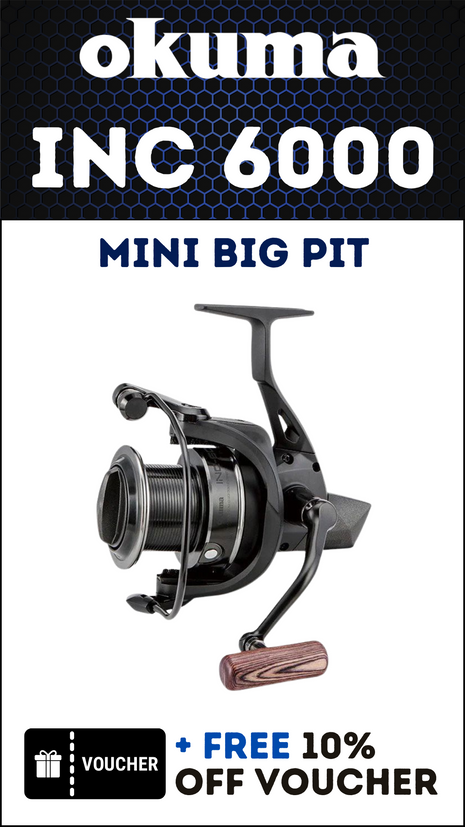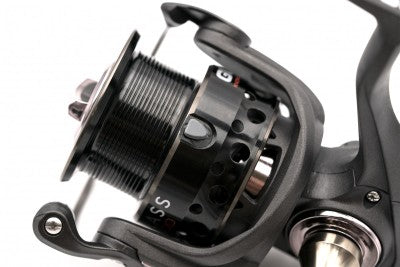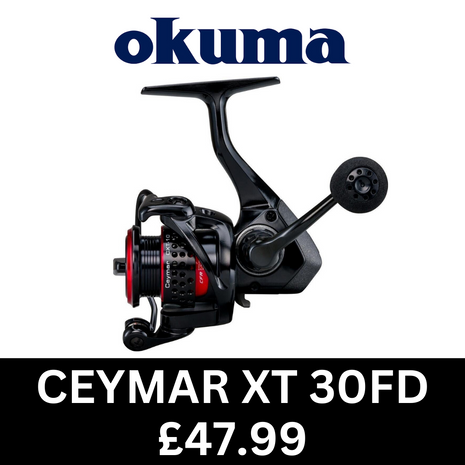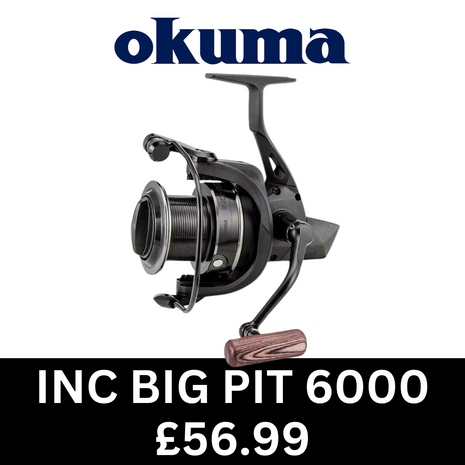In the world of match and carp fishing, selecting the right reel can make a significant difference in performance and success on the water. While there are numerous reel types available, freespool and front drag reels are among the most commonly used for these specific fishing styles. Both offer unique advantages that help anglers maximize their efficiency when targeting carp and other species in match-style conditions. Many anglers prefer one type or the other, it's largely personal preference, see some of our in stock fishing reels below.
In this guide, we will explore freespool and front drag reels, their mechanics, benefits, and popular models in the market, as well as how spool sizing and reel features impact casting and accuracy in match and carp fishing.
1. Freespool Reels in Match and Carp Fishing
Freespool reels are a type of fishing reel designed with a mechanism that allows the spool to rotate freely when the drag is disengaged. This feature is incredibly beneficial for match and carp fishing, as it gives the angler more control over how the fish takes the bait, especially in situations where the fish might take long runs or when fishing at greater distances.
1.1 How Freespool Reels Work
Freespool reels operate with a clutch mechanism that disengages the spool from the drag system when activated, enabling the spool to rotate freely. When a fish bites and pulls on the line, the spool spins without resistance, allowing the fish to take the bait without feeling any pressure. This reduces the chances of spooking the fish, which is particularly important in match and carp fishing where subtlety and stealth are key.
- Drag Engagement: When the angler is ready to set the hook or fight the fish, the freespool mechanism is re-engaged, and the drag comes into play. This allows the angler to fight the fish effectively and control the line tension, preventing the fish from breaking the line.
- Benefits:
1.2 Popular Freespool Reels for Match and Carp Fishing
Several manufacturers have designed reels that incorporate freespool technology specifically for match and carp anglers. These reels are often equipped with features that maximize performance and ensure smooth operation.
- Daiwa Tournament SS3000T:
- Shimano Aero Technium XSC:
- Fox EOS 10000:
- Daiwa Emcast 5000:
1.3 How Freespool Reels Impact Casting and Accuracy
Freespool reels have a major impact on casting and accuracy, especially in match and carp fishing.
- Casting Distance: Freespool reels are designed for long-distance casting, particularly when fishing for carp in large, open waters. The spool design and freespool mechanism reduce friction, allowing the line to flow off the reel more smoothly, which contributes to greater casting distances. With a properly balanced freespool reel, anglers can cast heavier baits and longer lines with accuracy.
- Accuracy: The ability to disengage the freespool means that the angler can focus on the accuracy of the cast, particularly when fishing to tight spots or over long distances. When the freespool is engaged, the line can flow freely and be directed precisely where it’s needed. The lack of resistance on the cast reduces the chances of tangles or snags, improving overall accuracy.
2. Front Drag Reels in Match and Carp Fishing
Front drag reels are another popular choice for match and carp anglers. These reels have a drag system that is positioned at the front of the reel, and they offer more precise control over the tension of the line, which is especially beneficial when fighting big fish like carp.
2.1 How Front Drag Reels Work
A front drag reel uses a friction-based drag system located on the front of the spool. This drag system is used to control the line tension during a fight with a fish. When the fish pulls hard, the drag system is engaged, allowing the line to be pulled off the reel in a controlled manner. This prevents the line from snapping under the strain of the fight and gives the angler better control over the fish.
- Adjusting the Drag: Front drag reels allow for precise adjustments to the drag tension, making it easy for anglers to fine-tune the level of resistance they want to apply when fighting a fish. This is particularly useful when fishing for carp, which are known for making powerful, long runs.
- Benefits:
2.2 Popular Front Drag Reels for Match and Carp Fishing
Several popular front drag reels are tailored specifically for match and carp anglers. These reels offer precision and smoothness, two essential qualities for targeting carp in various conditions.
- Shimano Ultegra CI4+ 14000 XTC:
- Daiwa Tournament Basia IR 10000:
- Fox FX9:
- Okuma Longbow XT 8000:
2.3 How Front Drag Reels Impact Casting and Accuracy
- Casting Distance: Front drag reels excel in casting accuracy and distance due to their precise drag adjustments and smooth line retrieval. These reels tend to feature larger spools that allow the line to flow off with minimal friction, which is ideal for long casts required in carp and match fishing.
- Accuracy: The smooth drag system allows anglers to make more accurate casts, especially when fishing in tight spots or areas that require precision. The lack of friction during the cast allows for better line control, which can result in better accuracy.
3. Spool Sizing and Its Effect on Casting
Spool size is a critical factor that directly affects casting distance, accuracy, and overall performance in fishing. The size of the spool on a freespool or front drag reel determines how much line the reel can hold, how smoothly the line is released during a cast, and how effectively the reel performs in various fishing conditions. In match and carp fishing, where casting distances are often significant and accuracy is essential, understanding the relationship between spool size and casting is key to selecting the right reel for the job.
3.1 Larger Spools and Casting Distance
A larger spool on a fishing reel is often associated with increased casting distance, particularly for carp and match anglers who need to cast long distances to reach their target area. Here's why larger spools tend to perform better when casting at greater distances:
- Reduced Line Friction: Larger spools allow for more line to be wound on the reel in a way that reduces friction when the line is released during a cast. This allows the line to come off the spool more smoothly, which results in fewer tangles and less resistance during the cast. The smoother release of the line contributes to a more efficient cast, translating to longer distances.
- More Line Capacity: Larger spools hold more line, which is especially useful when fishing at longer distances where a greater amount of line might be required to reach the target area. When fishing for carp in particular, where fish often take long runs, having a larger spool ensures you have ample line capacity to prevent the line from running out during the fight.
- Better Casting Control: When casting long distances, a larger spool helps in managing the line more effectively, ensuring that the line flows off the spool in a controlled manner. This reduces the chance of bird’s nests (backlashes) and allows for more accurate long-distance casts.
- Use in Carp Fishing: In carp fishing, particularly when fishing in large lakes or rivers, a larger spool is ideal for casting long distances to reach feeding areas or baited spots. The longer casting distance also helps in situations where you need to position your bait beyond the range of typical shore-casting.
Example of a reel with a large spool:
The Shimano Aero Technium XSC is a top choice for carp anglers who need to cover long distances. Its larger spool design allows for long, controlled casts, and it’s ideal for fishing in large bodies of water where distance is key.
3.2 Smaller Spools and Accuracy
While larger spools are great for distance, smaller spools are better suited for situations that demand higher accuracy, especially when casting to tight spots, fishing in areas with obstructions, or targeting fish in smaller bodies of water. Here's how smaller spools impact casting accuracy:
- Faster Spool Start-Up: Smaller spools generally start spinning more quickly during the cast. This quicker spool start-up allows for more precise line release, making it easier to control the direction of the cast and place your bait exactly where you want it. This is particularly important when fishing in areas with limited space, such as riverbanks or narrow fishing spots.
- Less Line Drop: Smaller spools typically result in less line drop, which helps with more accurate and controlled casts. This is particularly useful when fishing in conditions where you need to hit a small target area, such as casting to a specific feature in a lake, like a submerged tree or a drop-off.
- Reduced Line Memory: Smaller spools, especially those with shallow spools, often experience less line memory (the tendency of the line to retain the shape it was wound into on the spool). This can help reduce tangles and allow for better line control during casting, ensuring that the bait lands precisely in the desired area.
- Use in Match Fishing: In match fishing, accuracy is critical when trying to present bait precisely in areas where fish are actively feeding. Smaller spools are often preferred in situations where an angler needs to make repeated, highly accurate casts, especially in smaller lakes or when targeting fish in specific locations.
Example of a reel with a smaller spool:
The Daiwa Emcast 5000 features a smaller spool that allows for easier control of casting accuracy. It is often favored by match anglers who need to land their bait precisely in smaller areas or specific spots within a venue.
3.3 Spool Diameter and Line Flow
Another important aspect of spool size is the diameter of the spool. The diameter plays a significant role in how smoothly the line flows off the reel, which can affect casting performance.
- Wider Spools: A wider spool allows for more even line distribution and can help in preventing line tangles and knots. With a wider spool, the line is released more gradually, reducing the chances of sudden jerks or snags during the cast. This results in smoother line flow and better casting performance. Wider spools are often found in reels designed for long-distance casting, such as those used in carp fishing.
- Shallow Spools: Shallow spools hold less line, but they are often more precise when it comes to accuracy. The reduced line capacity is compensated by the reel’s ability to release the line with minimal resistance, which allows the angler to make more controlled and accurate casts. Shallow spools are particularly useful when fishing in smaller venues or when presenting small baits in specific locations.
- Line Flow and Casting Control: A spool with a larger diameter generally improves line flow during the cast, making it easier for anglers to manage longer lines. This is particularly beneficial for carp anglers who need to cast long distances and manage heavy lines while maintaining control of the cast. With a smoother release of the line, anglers can cast heavier baits with greater ease and precision.
3.4 Spool Material and Its Impact on Casting
The material of the spool also affects casting performance. Most modern reels use materials like aluminum, carbon fiber, or graphite for spools, as these materials provide strength without adding excessive weight.
- Aluminum Spools: Aluminum is one of the most common materials used for spools due to its lightweight and durable properties. An aluminum spool allows the line to flow more smoothly, contributing to better casting distance and accuracy. Aluminum spools are often used in high-end freespool and front drag reels for carp and match fishing.
- Carbon Fiber or Graphite Spools: These materials are becoming increasingly popular in high-performance reels due to their ultra-lightweight nature. They offer minimal resistance during casting and are highly durable, which allows for smoother and longer casts. Carbon fiber or graphite spools are often found in premium match and carp fishing reels, like those made by Shimano and Daiwa.
- Impact on Casting: A spool made of lightweight material reduces the overall weight of the reel, which, in turn, improves casting performance. Lighter spools require less effort to start spinning, allowing for quicker spool acceleration and smoother line release. This makes it easier to achieve both distance and accuracy when casting.
3.5 Line Capacity vs. Spool Size
Spool size directly impacts how much line the reel can hold. For anglers, the line capacity of the reel is crucial, particularly when fishing for large fish like carp that may make long runs. The larger the spool, the more line it can hold, which gives the angler a greater margin for error if a fish takes a long run. This is why larger spools are preferred in carp fishing, where the fish often require more line to be taken out during the fight.
- Larger Capacity for Carp Fishing: Larger spools with higher line capacities are particularly useful for anglers who regularly fish for big carp in large bodies of water. Having more line available means the angler can handle more runs and fights with large fish without worrying about running out of line.
- Smaller Capacity for Match Fishing: In match fishing, line capacity is important but not as critical as in carp fishing, as the distances are often shorter and the fish are generally smaller. A smaller spool with adequate line capacity for the fishing style can work perfectly well in these situations.
Conclusion
Spool size plays a vital role in the performance of freespool and front drag reels, impacting both casting distance and accuracy. Larger spools are ideal for long-distance casting, providing reduced friction, greater line capacity, and smoother line release.
Smaller spools, on the other hand, excel in accuracy, offering quicker spool start-up, reduced line drop, and improved line control. Additionally, spool diameter and material significantly affect how smoothly the line flows, which in turn impacts overall casting performance. When selecting a reel for match and carp fishing, understanding how spool size affects casting and performance will help you choose the right reel for your fishing style and conditions.

